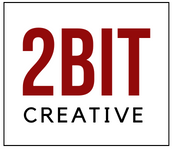User Experience (UX) design is a multidimensional field where the smallest detail can significantly impact the overall usability and satisfaction of a product. Wireframing, a crucial step in the UX design process, has its own set of challenges and issues that designers often face. In this blog post, we’ll delve into some of these wireframing concerns and explore strategies to overcome them.
- Overemphasis on Aesthetics over Functionality
One common pitfall in wireframing is the temptation to make wireframes look polished and visually appealing. While aesthetics are important, the primary goal of wireframing is to establish the functional layout and structure of an interface. When aesthetics take precedence over functionality, it can lead to confusion and misalignment with user expectations. To address this issue, prioritize functionality during wireframing and save visual design for later stages.
- Lack of User-Centered Focus
Wireframes should always be created with the end-user in mind. Failing to consider user needs and preferences can result in designs that don’t resonate with the target audience. Conduct user research, create user personas, and involve users in the wireframing process through usability testing and feedback gathering. This user-centric approach ensures that wireframes meet actual user requirements.
- Skipping Mobile-First Design
With the increasing use of mobile devices, it’s essential to adopt a mobile-first design approach. Neglecting to consider mobile users during wireframing can lead to challenges in adapting designs to smaller screens later in the process. Begin with wireframes tailored for mobile devices, and then scale up to larger screens to ensure a seamless user experience across all platforms.
- Overcomplicating or Undercommunicating Interactions
Wireframes should effectively communicate how different elements interact with each other. Designers often grapple with striking the right balance between overcomplicating wireframes with excessive detail and undercommunicating essential interactions. Use annotations and notes to clarify interactions, and consider creating interactive prototypes when necessary to demonstrate functionality effectively.
- Neglecting Content Strategy
Content is king in UX design, yet it’s often overlooked in wireframing. Placeholder text like “Lorem Ipsum” doesn’t provide an accurate representation of the user experience. To address this issue, collaborate with content creators to ensure wireframes incorporate real content. This allows for a more accurate assessment of the overall design and helps identify content-related challenges early in the process.
- Version Control and Collaboration
Managing multiple versions of wireframes and collaborating with team members can become a logistical nightmare. Use wireframing tools that offer version control features and facilitate collaboration. Tools like Figma and Sketch allow multiple users to work on wireframes simultaneously and keep track of changes.
- Not Testing Early and Often
User testing should be an integral part of the UX design process, even at the wireframing stage. Testing early and often helps identify issues and gather valuable user feedback before investing significant resources in higher-fidelity designs. Incorporating user feedback into wireframes can save time and resources down the road.
Wireframing is a vital step in the UX design process, laying the foundation for successful user experiences. By addressing these common issues, UX designers can create wireframes that prioritize functionality, cater to user needs, and streamline the design process. Remember that wireframing is an iterative process, and continuous refinement is key to delivering user-friendly and effective interfaces.
